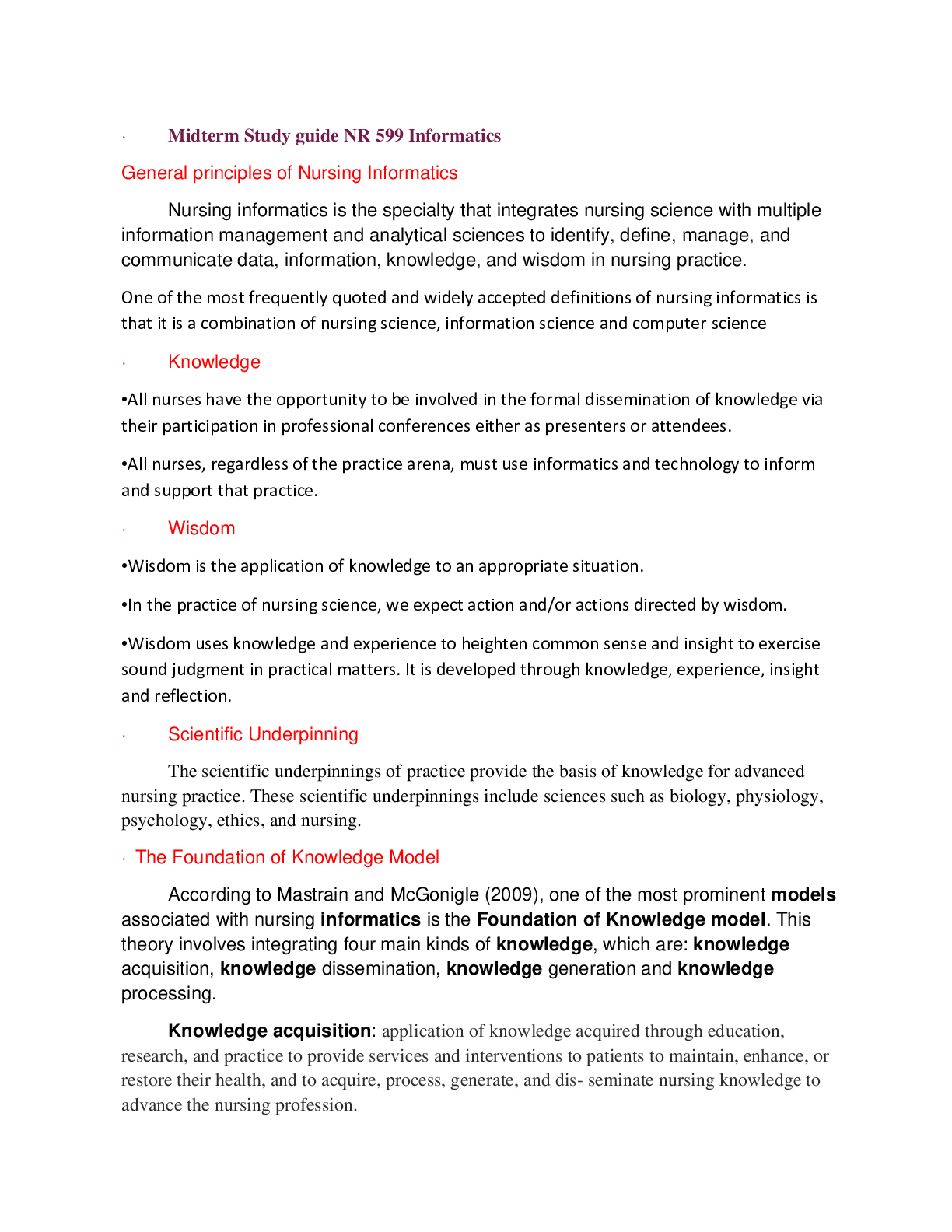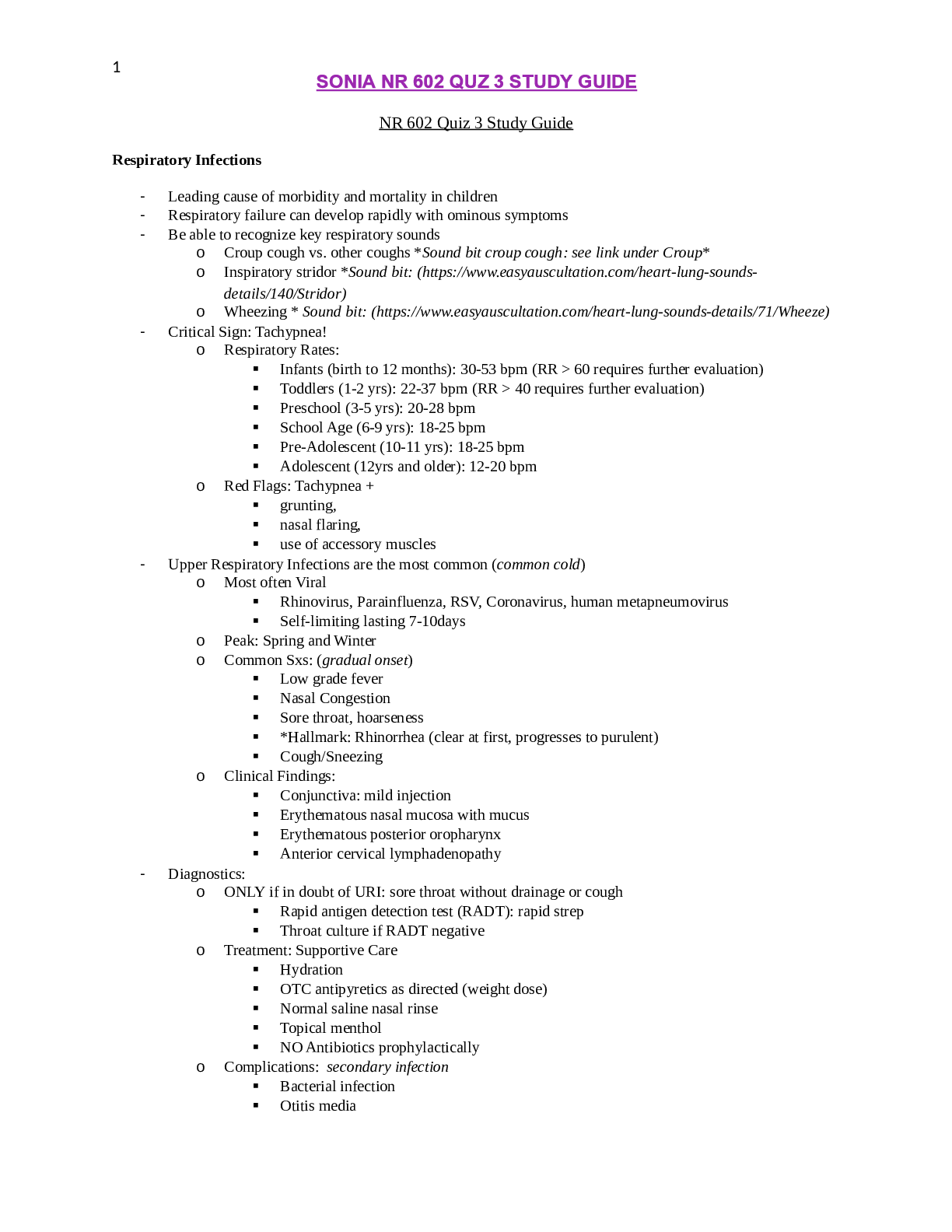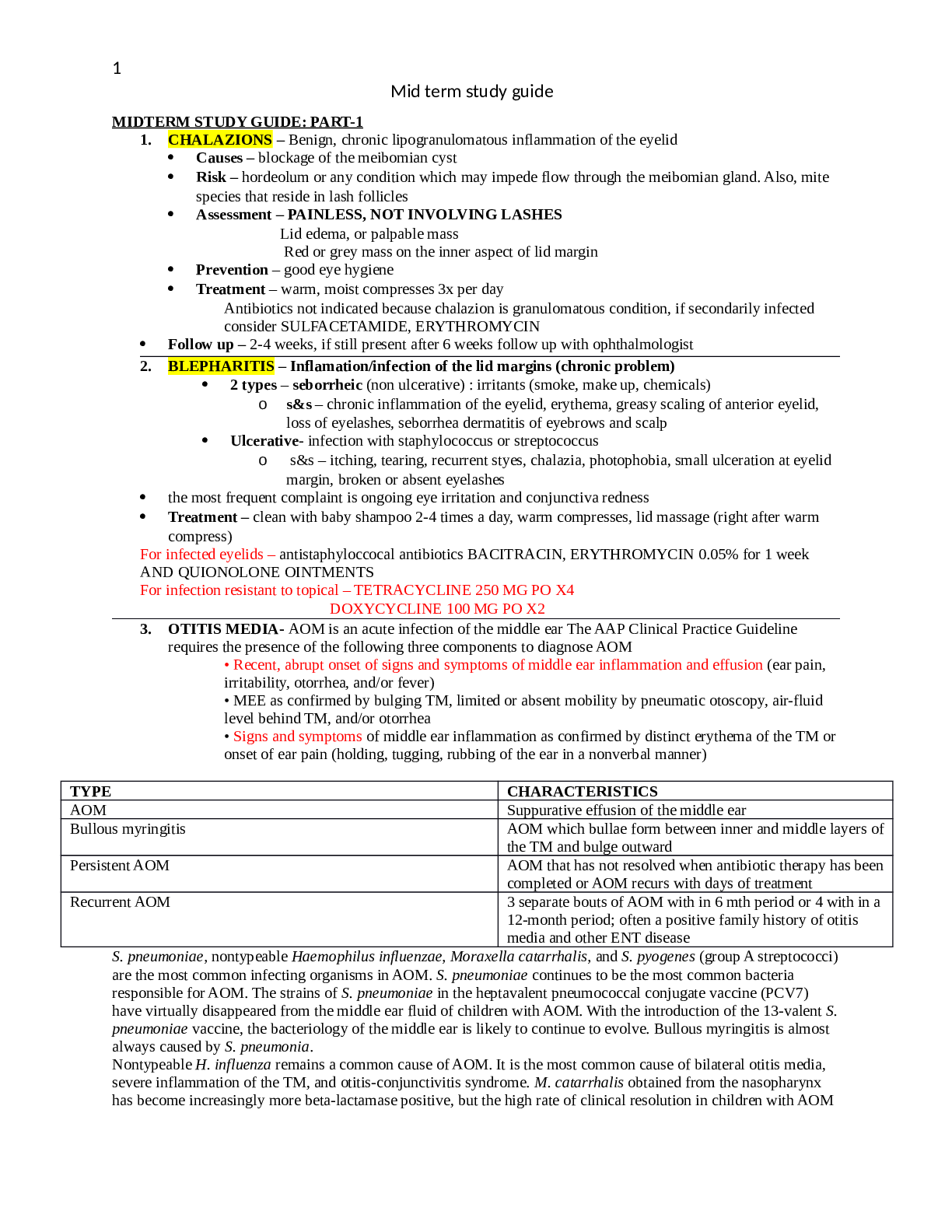English > STUDY GUIDE > Exam 1 Study Guide COM 100 (All)
Exam 1 Study Guide COM 100
Document Content and Description Below
Chapter 1 1.1 Explain why it is important to study human communication. As you begin this book, several questions may arise. First, you may wonder exactly how the study of human communication diffe... rs from other studies of humans, such as psychology. Communication differs from other social science disciplines because it focuses exclusively on the exchange of messages to create meaning. Scholars in communication explore what, when, where, and why humans interact (Emanuel, 2007). They do so to increase our understanding of how people communicate and to help individuals improve their abilities to communicate in a wide variety of contexts. In addition, unlike most social sciences, the study of communication has a long history—reaching back to the classical era of Western civilization when Socrates, Plato, and Aristotle wrote about the important role of communication in politics, the courts, and learning (National Communication Association [NCA], 2003; Rogers & Chafee, 1983). However, the ability to speak effectively and persuasively has been valued since the beginning of recorded history. As early as 3200–2800 BCE, the Precepts of Kagemni and Ptah-Hotep commented on communication (NCA, 2003). Second, you may question why anyone needs to study communication; after all, most people have probably been doing a reasonably good job of it thus far. And isn’t most communication knowledge just common sense? Unfortunately, it is not. If good communication skills were just common sense, then communication would not so often go awry. In fact, most people struggle with how to communicate well: they don’t know how to listen so that other people feel heard; they aren’t sure how to convince others to see their point of view, and they often aren’t able to settle disagreements with people they care about deeply. Because communication is a complex activity, we need to learn skills that allow us to adapt our communication so others will hear, understand, connect with and care for us. Think of times when you felt others failed to communicate effectively with you. Have you ever felt that one of your teachers talked down to you? Have you had a relationship end because you and your partner had a misunderstanding? Or, have you failed to get what you wanted—a job, an invitation, your parents’ support—because you couldn’t figure out how to interact with others in specific contexts? In sum, talking is not equivalent to communicating. We can drown others in words, but if they do not understand, connect with and care about those words, then we have not communicated with them at all. Now that we have so many ways to communicate and maintain relationships with others, some scholars have begun to ask if it is possible to have too much communication. Do you think this is possible or likely? To learn how some communication scholars answer this question, see Alternative View: Co-rumination: When Too Much Talk Is As Bad As Not Enough. Co-rumination: When Too Much Talk Is As Bad As Not Enough Can you think of other occasions when people talk “too much”? You have probably heard that to have good relationships, people need to “communicate more.” However, sometimes communicating a lot can have negative effects. One type of “over-communication” that can cause harm is co-rumination. Corumination occurs when we talk—again—and again—and again—with others about a problem in our lives. It has been linked to negative outcomes such as depression, anxiety, binge eating, binge drinking, and self-harm (Nolen-Hoeksema, Wiscol, & Lyubomirsky, 2008). Co-rumination often occurs among friends, because that is to whom we turn most often when we encounter problems. In an attempt to console or support each other, such as when a break-up occurs, friends often tolerate or even encourage each other to talk extensively about what happened and how they feel. Individuals are most likely to engage in co-rumination during adolescence and young adulthood. In addition, because women tend to talk more and offer more emotional and verbal support to their friends, they also are more likely to co-ruminate. Why is co-rumination unhealthy? During co-rumination, participants’ communication focuses on the issue and its negative effects rather than on solutions. Repeatedly discussing how bad something is and how horrible one feels about it does nothing to change the problem or to change how the person feels about it. In fact, such discussions may make one feel worse and helpless to do anything about it. Consequently, experts suggest that conversations that focus on solutions and suggest that the problem can be overcome offer a more effective approach. SOURCE: Nolen-Hoeksema S., Wisco B., & Lyumbomirski S. Rethinking rumination. (2008). Perspectives on Psychological Science, 3, 400–424. Finally, you may think of communication as a set of skills but believe that they are easily learned and wonder why there is an entire course (even a major!) that focuses on communication. Although it is true that every day people use communication to accomplish practical goals such as inviting a friend to see a movie, resolving a conflict with a colleague, or persuading the city council to install speed bumps in their neighborhood, communication is more than just a set of skills, like baking, that one can use in a variety of contexts and settings with little alteration. Rather, communication is an intricate process whose effective performance requires an in-depth understanding of how it works and the ability to apply one’s critical thinking skills to communication experiences to learn from and improve them. Critical Thinking: A Key to Successful Communication Critical thinking requires that one become a critic of one’s own thoughts and behavior. That is, rather than responding automatically or superficially, critical thinkers reflect on their own and others’ communication, behavior, and ideas before responding (Paul & Elder, 2008). Scholars have proposed various definitions of critical thinking; the one we advocate describes it as a process that involves the following steps (Passer & Smith, 2004): 1. Identify the assertion or action. 2. Ask, “what is the evidence for and against the assertion or action?” 3. Ask, “what does the bulk of evidence point to?” 4. Ask, “what other explanations or conclusions are possible?” 5. Continue to keep an open mind for new evidence and new ways of evaluating the assertion. If your romantic partner doesn’t answer a text message, it could be because she is studying and has turned off her phone. How might one apply this process to communication interactions? Let’s explore this with a simple and common example, showing the steps in the process. Advantages of Studying Human Communication There are many advantages to studying human communication. Individuals use communication to meet people, to develop professional and personal relationships, and to terminate dissatisfying ones. Communication scholar Steve Duck argues that relationships are primarily communicative (1994). Moreover, the relationships we have with others—including how we think and feel about one another—develop as we communicate. Through communication interactions, relationship partners develop shared meanings for events, explanations for their shared past, and a vision of their future together (Alberts, Yoshimura, Rabby, & Loschiavo, 2005; Dixon & Duck, 1993). So, if you tell your romantic partner, “I have never loved anyone as much as I love you, and I never will,” you are simultaneously redefining your past romantic relationships, creating shared meaning for the present relationship, and projecting a vision of your romantic future together. Similarly, through communication with friends, coworkers, and acquaintances, we all define and redefine our relationships. Perhaps most fundamentally, your communication interactions with others allow you to establish who you are to them (Gergen, 1982; Mead, 1934). As you communicate, you attempt to reveal yourself in a particular light. For example, when you are at work, you may try to establish yourself as someone who is pleasant, hardworking, honest, and competent. With a new roommate, you may want your communication behavior to suggest you are responsible, fun, and easygoing. However, at the same time that your communication creates an image of who you are for others, their communication shapes your vision of yourself. For example, if your friends laugh at your jokes, compliment you on your sense of humor, and introduce you to others as a funny person, you probably will see yourself as amusing. In these ways, communication helps create both our self-identities and our identities as others perceive them. [Show More]
Last updated: 2 years ago
Preview 1 out of 111 pages

Buy this document to get the full access instantly
Instant Download Access after purchase
Buy NowInstant download
We Accept:

Reviews( 0 )
$8.50
Can't find what you want? Try our AI powered Search
Document information
Connected school, study & course
About the document
Uploaded On
Jul 30, 2021
Number of pages
111
Written in
Additional information
This document has been written for:
Uploaded
Jul 30, 2021
Downloads
0
Views
67



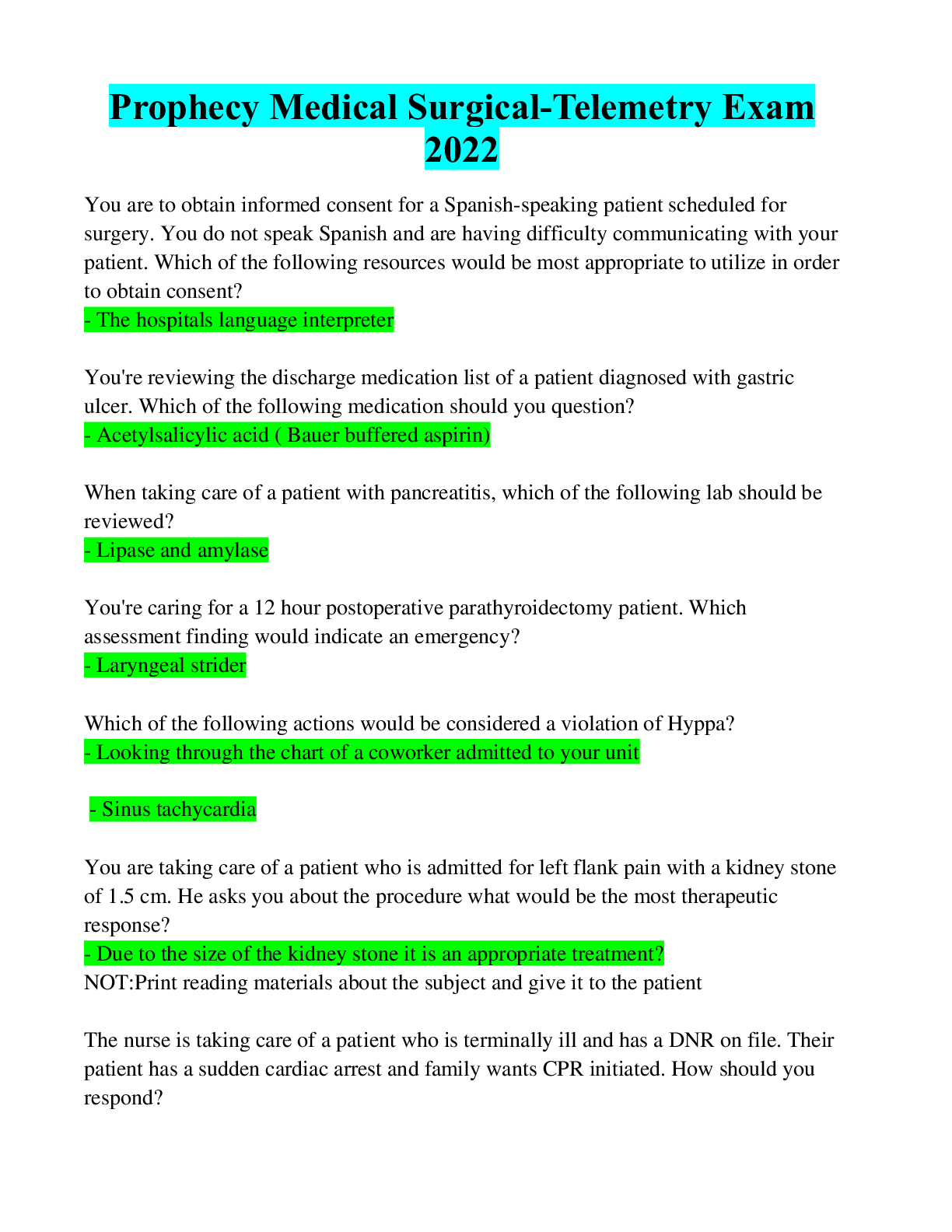



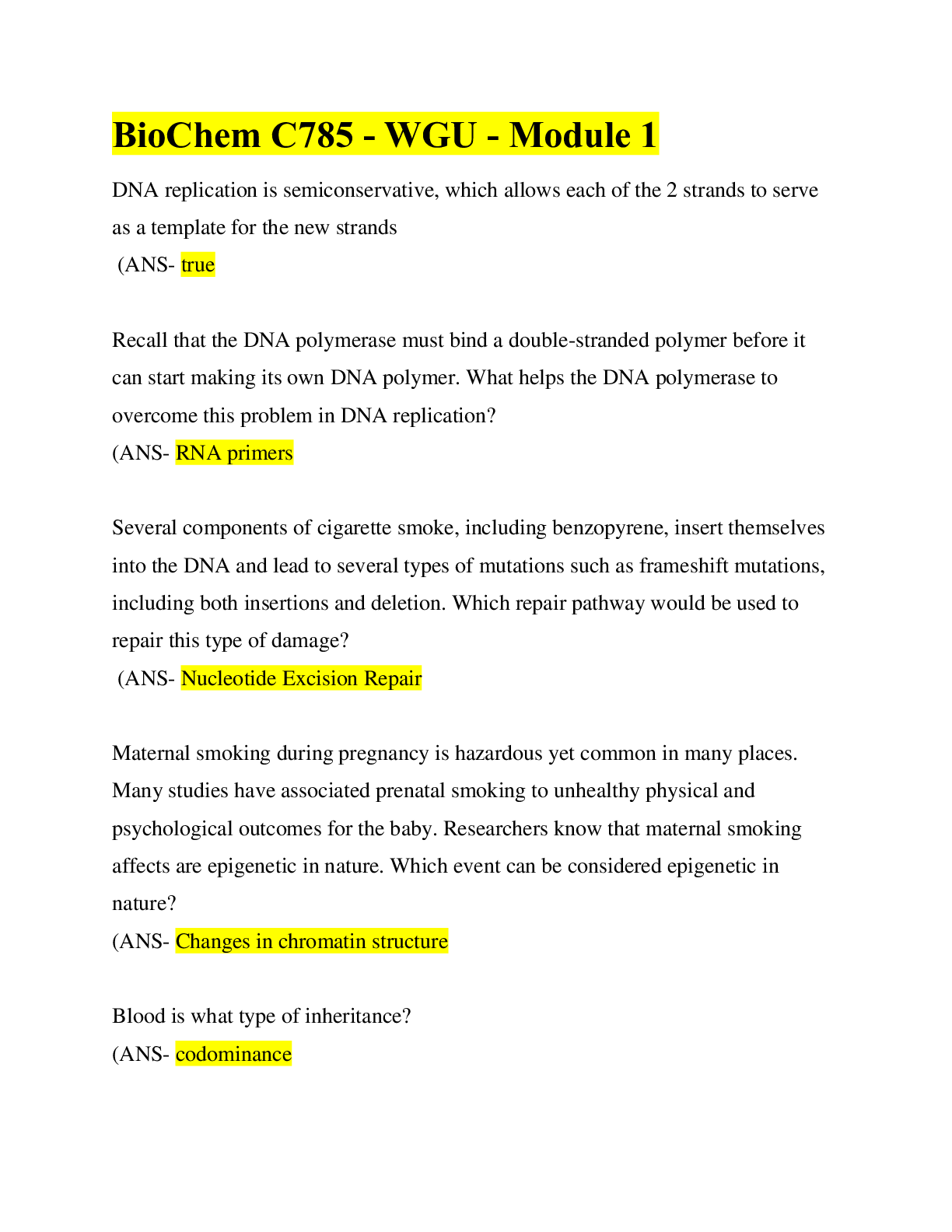
.png)

.png)


